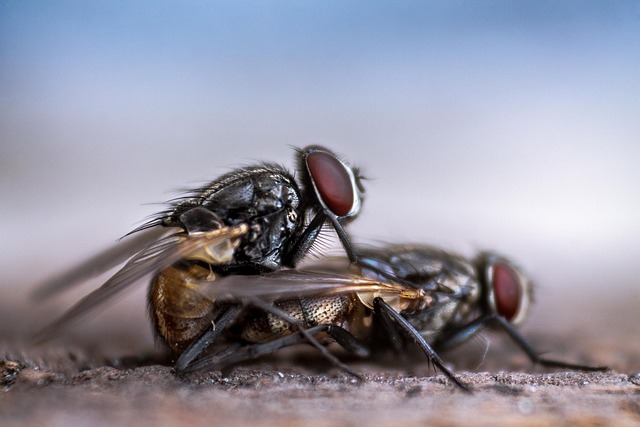In the battle against bed bugs, innovative treatment options are crucial for hard-to-reach infestations hiding in cracks, electronics, and furniture. Modern solutions like heat/cold therapy, UV light technology, advanced monitoring systems, and biopesticides offer safer, eco-friendly alternatives to traditional chemical pesticides. These tailored methods minimize environmental impact while effectively eliminating bed bugs at all life cycle stages, making them the preferred choice for effective, sustainable bed bug control in both commercial and residential settings.
In the realm of pest control, hard-to-reach infestations pose unique challenges. From hidden bed bug nests to intricate ant colonies, these pests often elude conventional methods. This article explores innovative solutions tailored for such persistent issues. We delve into understanding the intricacies of hard-to-reach infestations and the evolution of treatment options. Discover traditional versus cutting-edge approaches, including heat treatments, UV light technology, and eco-friendly biopesticides. Uncover targeted strategies that revolutionize pest management, ensuring a quieter, pest-free environment.
Understanding Hard-to-Reach Pest Infestations: Common Challenges and Hidden Nests
Hard-to-reach pest infestations pose unique challenges for professionals, often involving hidden nests and difficult-to-access areas. Bed bugs, for instance, are masters of hiding, capable of infesting a wide range of spaces from cracks in walls to inside electronics and furniture. Their tiny size and elusive nature make them hard to detect with the naked eye, leading to overlooked infestations that can spread rapidly.
These challenges require innovative bed bug treatment options beyond conventional methods. Professional exterminators employ specialized equipment like thermal imaging cameras to locate hidden nests and targeted treatments such as heat or cold therapy, which are highly effective but demand precise application. Understanding these complex dynamics is crucial for addressing hard-to-reach infestations successfully, ensuring a thorough and efficient solution without causing unnecessary damage or environmental impact.
Bed Bug Treatment Options: Traditional vs Innovative Approaches
In the battle against bed bugs, understanding the difference between traditional and innovative treatment options is key. Traditional methods often involve intensive chemical treatments, which while effective, can be costly and come with potential health risks. These methods typically rely on heavy applications of pesticides, requiring a thorough cleanout of infested areas to prevent reinfestation. On the other hand, innovative bed bug treatment options are emerging, offering safer and more targeted approaches.
Technologies such as heat treatments, cold treatments, and specialized chemicals designed to disrupt bed bugs’ life cycles are gaining popularity. Heat treatments, for instance, use high temperatures to kill all stages of bed bugs, including their eggs. Cold treatments utilize low temperatures to freeze and kill the pests. These innovative options not only provide effective bed bug control but also minimize the need for extensive chemical use, making them more environmentally friendly and safer for residents.
Integrating New Technologies: Heat Treatments, UV Light, and Beyond
In the ever-evolving battle against pest infestations, especially those involving bed bugs, innovative technologies are transforming traditional methods. Heat treatments have long been a go-to option, but modern advancements offer more precise and effective solutions. For instance, the use of UV light technology targets pests without harmful chemicals, making it ideal for hard-to-reach areas. This method is particularly useful in homes and commercial spaces where chemical residues can be a concern.
Beyond heat and UV light, new developments include advanced monitoring systems and data analytics. These tools allow professionals to track pest activity, predict infestations, and deploy treatments more efficiently. By integrating these cutting-edge technologies, bed bug treatment options become more tailored, environmentally friendly, and cost-effective, ensuring a better outcome for both businesses and homeowners dealing with these persistent pests.
Targeted, Eco-Friendly Solutions: Biopesticides and Behavioral Modifications
In the quest for effective yet environmentally conscious pest control, targeted eco-friendly solutions like biopesticides have emerged as powerful tools. Biopesticides leverage natural substances to target specific pests, minimizing harm to non-target organisms and reducing environmental impact. For instance, these solutions can disrupt pest behavior by interfering with their life cycles or communication systems, offering a safer alternative to conventional chemicals.
When it comes to stubborn bed bug infestations, biopesticides combined with behavioral modifications prove particularly effective. By understanding the bugs’ habits and preferences, professionals can employ strategies such as using attractants or repellents to manipulate their behavior. This approach not only aids in eradication but also reduces the need for harsh chemicals, making it a preferred option among those seeking bed bug treatment options that prioritize both efficacy and sustainability.
In addressing hard-to-reach pest infestations, particularly bed bugs, it’s clear that innovative methods are essential for effective and efficient control. By understanding the unique challenges posed by these hidden nests, professionals can explore a range of advanced solutions. From heat treatments and UV light technology to eco-friendly biopesticides and behavioral modifications, these cutting-edge approaches offer promising alternatives to traditional methods. Integrating new technologies allows for more precise and targeted bed bug treatment options, ensuring better outcomes while minimizing environmental impact.
